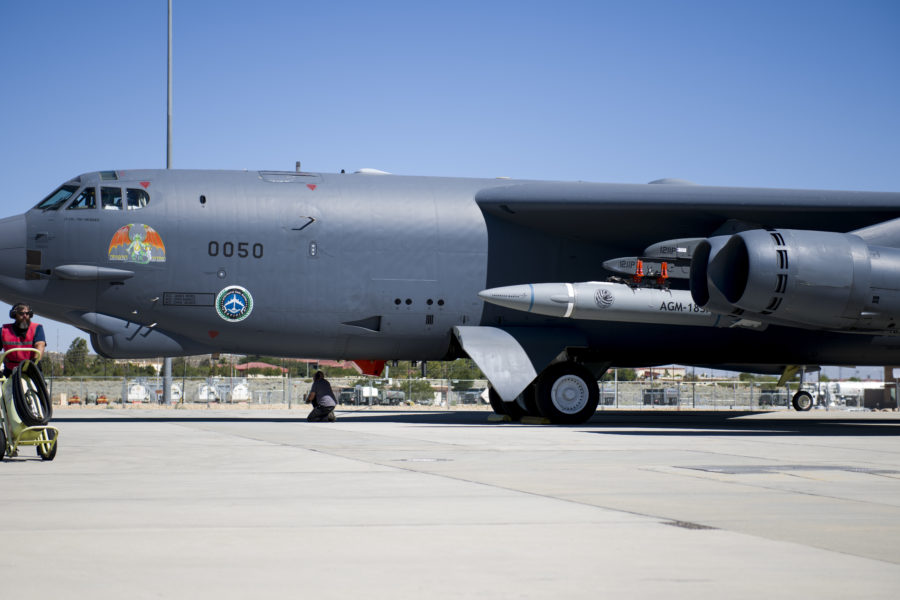Three more “all-up” flight tests of the AGM-183 Air-launched Rapid Response Weapon (ARRW) must succeed before the Air Force decides whether to press on into production for the hypersonic missile, the service has told Air & Space Forces Magazine.
“The ARRW rapid prototyping program plans for four All-Up Round Test Flights (ATFs),” an Air Force spokesperson said in response to questions posed following a Dec. 9 all-up ARRW flight test the service characterized as a success. All-up testing refers to using the operationally-configured system.
“We will need to analyze all four planned ATFs before making a determination” as to whether to enter production, the Air Force spokesperson said. “Our goal is to have a leave-behind capability by the early 2020s.”
The next test is tentatively slotted for the second quarter of fiscal 2023, the Air Force said, but the target area and “target set” are classified.
The ARRW is a missile system, launched from a bomber, that relies on a booster to accelerate to hypersonic speed, at which point a vehicle separates from the booster and glides at Mach 5 or faster to its target, maneuvering along the way. Much of the technology and the details of the program are classified.
The program calls for a “leave-behind” capability of an undisclosed number of missiles that could be used in combat after the prototyping phase ends, the Air Force said. Initial plans called for an operational asset to be available in 2022, but a series of test failures and delays have pushed back that timeline. There have been three successful flights of ARRW this year; the last one was the first for an “all-up round” that could carry out the end-to-end sequence of the weapon’s employment.
The Air Force asked for $161 million to buy 12 ARRWs in the fiscal 2023 budget request, but Congress slashed that request in half due to testing delays and other issues.
Lockheed Martin Missiles and Fire Control is the contractor for ARRW. Responding to questions after the Dec. 9 test, the company said it does not yet have a commitment from the Air Force to enter production.
“We cannot speak for future U.S. Government budgetary strategy or decisions,” according to Jay Pitman, vice president of air dominance and strike weapons, “beyond what was asked for in the development program.”
However, “this successful test is a terrific confidence builder that the weapon can be produced and operate as the Air Force asked us to do, and paves the road for further tests to fully qualify the system,” Pitman added.
In addition to carrying out a further three all-up flight tests, Lockheed must formally demonstrate its “production readiness at our final assembly plant and within the supply chain,” in order to complete the development program, Pitman said in an email.
The Dec. 9 test “validates the design and production of the current configuration of our system, which focuses on a full-prototype operational missile,” Pitman said.
“Due to the highly-accelerated timeline of the program, we are running operational scenarios and testing alongside traditional testing to greatly reduce the time it takes to get these systems to the warfighter. With this test, we demonstrated the missile’s operational end-to-end capability at hypersonic speeds.”
Congress has been pushing the Pentagon to match Chinese capability in hypersonic weapons, as Beijing is considered ahead in this area of technology. However, Air Force Secretary Frank Kendall has cautioned that USAF’s weapon needs are different from those of China, and a huge investment in hypersonics is not necessarily an Air Force priority.
Andrew Hunter, Air Force acquisition executive, told reporters in July that even if ARRW “works,” it has to offer “the right contribution to the overall weapons mix” relative to the “highest priority targets.” This, he said, is what is driving Air Force decisions about production. However, Hunter said he wants to be able to move out rapidly with production if the decision is made to do so.


